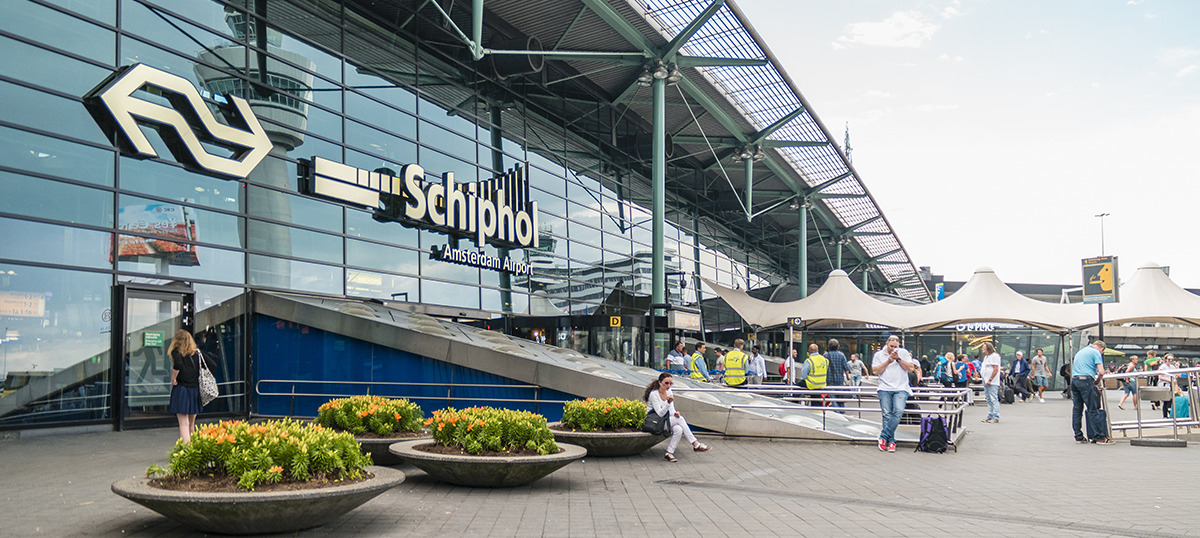
Enterprise architecture at Schiphol: A safe landing for information technology
With our advanced architecture, Schiphol can now navigate complexity, ensure regulatory compliance, and deliver exceptional passenger experiences.
Country: Netherlands
Industry: Aviation
Company size:
Revenue: €1,5 billion +
Results:
The Royal Schiphol Group in The Netherlands operates four airports across the Netherlands in Amsterdam, Rotterdam, Den Hague, and Lelystad and they also hold a majority share in Eindhoven airport. The group also owns shares and collaborates closely with various international airports. The group’s vision is to ‘connect the Netherlands,’ and before COVID, their airports received 80,5 million passengers and processed 1,57 million tons of cargo annually.
Amsterdam Schiphol Airport is on a mission to become an autonomous airport by 2050, utilizing cutting-edge technology, data, and artificial intelligence (AI) to streamline processes while maintaining a human touch. To achieve their mission, Schiphol has transformed from an infrastructure to a technology company. Architecture (designed using Bizzdesign) has become an essential capability for Schiphol to help them leverage emerging technologies successfully.
The airport is part of the Royal Schiphol Group, which operates several Dutch airports. These airports collectively receive an estimated 80,5 million passengers and process 1,57 million tons of cargo annually.
The airport manages complex logistical operations, including aircraft, transit passengers, and baggage goods. To address the intricacies of these operations and adapt to emerging technologies such as AI and machine learning (ML), Schiphol has invested in an event-driven and service-based architecture that prioritizes scalability and adaptability. By embracing this architectural approach, Schiphol aims to map the complex interdependencies within its operations and improve the quality of service to meet the evolving needs of passengers.
To bring its application landscape (buy and build) to life, Schiphol relies on a robust foundation of technology and data. This foundation establishes reusable building blocks for the business platforms, enabling the airport to easily implement digital elements and continue evolving its foundation with minimal disruption. Moreover, this flexible architecture facilitates sharing digital products and solutions with other airports, fostering collaboration and knowledge exchange.
Addressing passengers’ needs
Recognizing that passengers consume digital information in various ways, Schiphol has implemented a self-service infrastructure alongside digital channels such as apps and websites. By utilizing location-based APIs (Application Programming Interfaces), Schiphol enables app providers like KLM to access and incorporate their data, distinguishing the airport from others by promoting information sharing. This approach, known as “scaling by design,” empowers Schiphol to cater to the unique needs of its passengers while leveraging the power of digital technology.
According to Sjoerd Blüm, former CIO and now a business developer for Schiphol’s digital solutions, technology and data activities are crucial in ensuring seamless customer journeys. This necessitates a reimagined approach to architecture. Arthur de Vries, the chief architect, adds that the advanced architecture should simplify the complex interdependencies within Schiphol, accommodating changing laws, regulations, and passenger requirements, all while leveraging modern technologies.
Architects and the architecture team are vital in setting the guardrails and direction for the airport’s IT landscape. By strategically deploying technology to support business goals, architects ensure the right tools are utilized in the right places. Schiphol’s architects, comprising enterprise architects and solution architects, are embedded within the business platforms, such as Airport Operations. They work directly with one or multiple scrum teams, aligning technology and architecture with the needs of the business.
Schiphol uses Bizzdesign’s enterprise architecture platform to develop architecture models and document the roadmap for their target and future state. The airport’s architectural principles emphasize the balance between freedom and guardrails, craftsmanship within guilds, and collaboration between architects and internal customers. Central to these principles is data management, as Schiphol recognizes the importance of a data-driven architecture to handle the volume and complexity of data required to keep the airport’s processes running smoothly daily.
With its forward-thinking vision and commitment to architectural excellence, Amsterdam Schiphol Airport is paving the way for autonomous airports of the future.
Read the original Dutch article published in IT Executive here
Schiphol has a comprehensive understanding of their operations through the advanced architecture